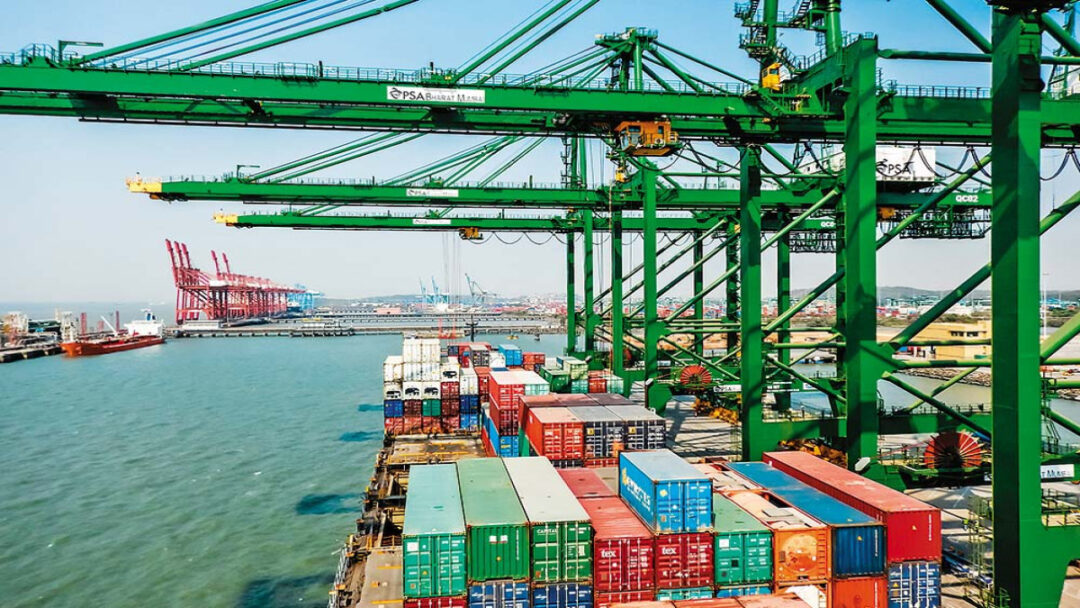The size of India’s nominal GDP would nearly double to over US $ 7 trillion by fiscal 2030–31 from US $ 3.6 trillion in fiscal 2023–24, according to S&P Global Market Intelligence projections. This would make India the third-largest economy in the world, raising its share in global GDP from 3.6 per cent to 4.5 per cent and lifting its per-capita income to the upper-middle-income group, S&P said in a report.

India is also set to transition to the upper-middle-income category by fiscal 2030–31 if forecast annual growth of 6.7 per cent is realized, according to S&P Global. This follows an impressive GDP growth of 8.2 per cent in the fiscal year 2024, significantly exceeding the government’s earlier estimate of 7.3 per cent.
“More broadly, we expect India’s real GDP to grow 6.8 per cent in the current fiscal year, moderating from a high base in fiscal 2023–24,” it said.
The continuation of structural reforms to facilitate business transactions and improve the logistics sector will support private sector investment, making growth less dependent on public capital expenditure, S&P Global said in the report.
S&P said India is the fastest-growing large economy, with an 8.2 per cent growth rate in FY 2024, surpassing earlier estimates. Continued reforms are crucial to improving business transactions and logistics, boosting private sector investment, and reducing reliance on public capital. “The equity markets are expected to stay dynamic and competitive due to strong growth prospects and better regulation. Foreign inflows into Indian government bonds have surged since the country joined major emerging market indexes, with further growth anticipated,” it said.
“High food price inflation in the face of climate change could constrain monetary policy, making investment more expensive,” it said. Enhancing climate risk adaptation and mitigation policies and infrastructure to de-risk agriculture are therefore imperative for the smooth conduct of monetary policy, S&P Global said.
According to the report, fiscal 2024–25 started on a strong note, with goods and services tax (GST) collections at an all-time monthly high of 2.1 trillion Indian rupees in April and remaining healthy in May and June.
To maximize trade benefits, India must develop infrastructure and geopolitical strategies, particularly regarding its extensive coastline. “Nearly 90 per cent of India’s trade is seaborne, necessitating robust port infrastructure to manage increasing exports and bulk commodity imports,” the report said.
Given strong HSBC India Purchasing Managers’ Index (PMI) readings so far in fiscal 2024–25 and with manufacturing and services sector activity trending well above the neutral mark of 50 to signal expansion, robust growth appears to be the key driver of GST collections and improved compliance. The HSBC India PMI is compiled by S&P Global Market Intelligence. The India Composite PMI Output Index reached one of the highest levels in nearly 14 years, supported by favorable economic conditions, strong demand, capacity expansion, increased new work intake and productivity gains.
“India has consistently experienced the highest private sector PMI output expansion worldwide over the past year,” it said.
There has been an increase in new export orders for goods and services, complementing buoyant domestic demand in India and driving expansion in total sales and business activity. “Qualitative data from the PMI surveys also reveals new business gains for manufacturers and service providers globally,” S&P Global said.
The transmission of the Reserve Bank of India’s (RBI’s) rate hikes between May 2022 and February 2023 is underway and likely to modestly weigh on demand in fiscal 2024–25. Regulatory actions to tame unsecured lending are also slowing credit growth. Additionally, the government’s intended fiscal consolidation will mean a lower fiscal push to growth. Even at 6.8 per cent, India would be the fastest-growing large economy, the report said.


